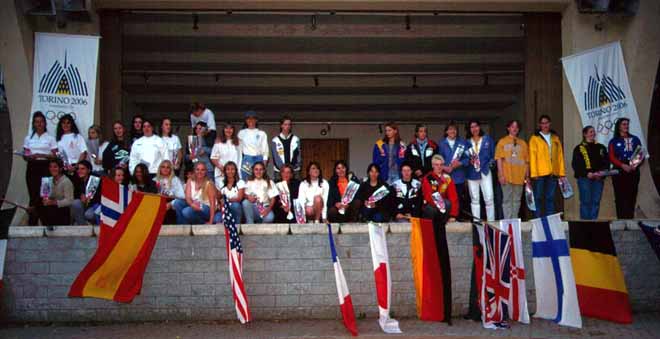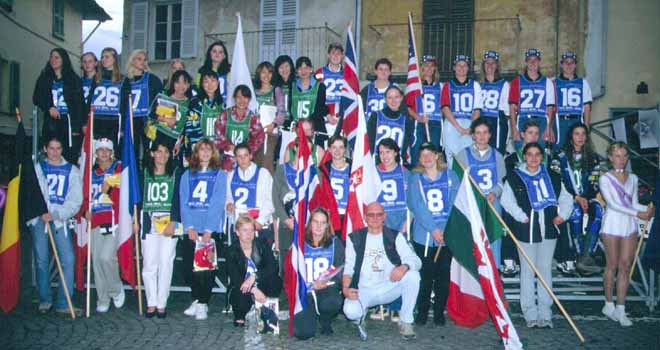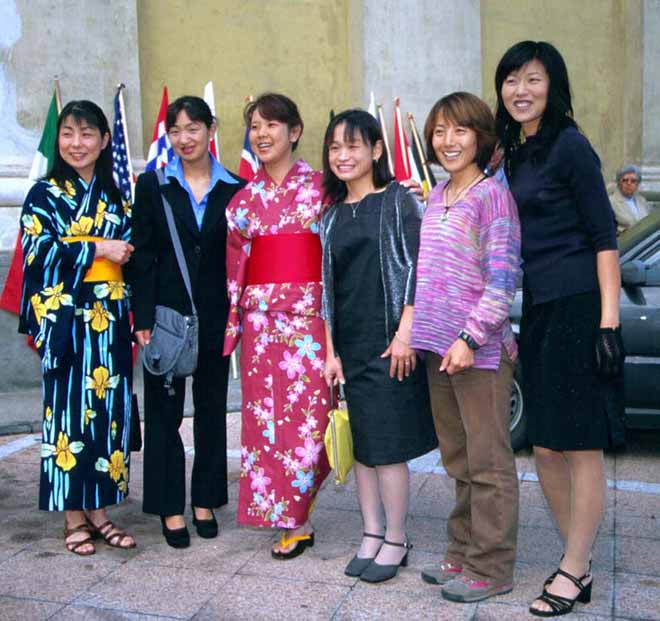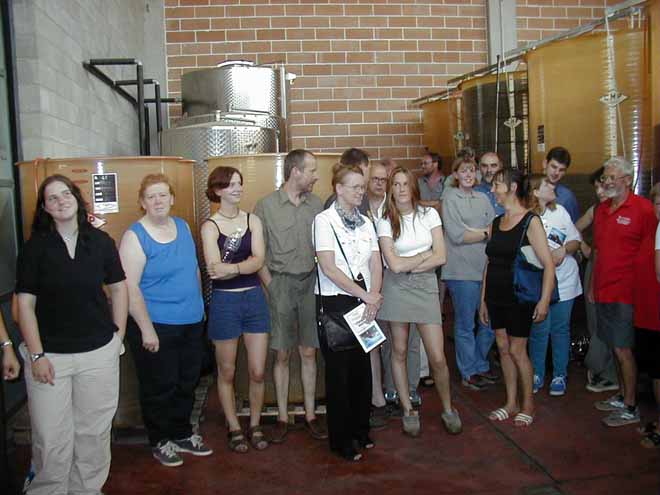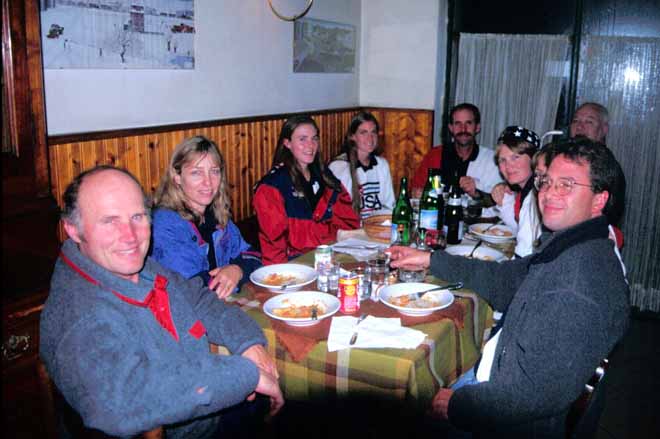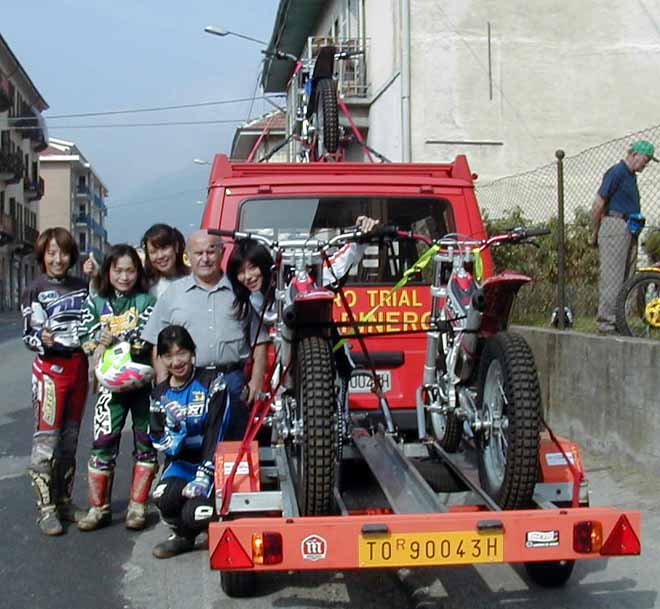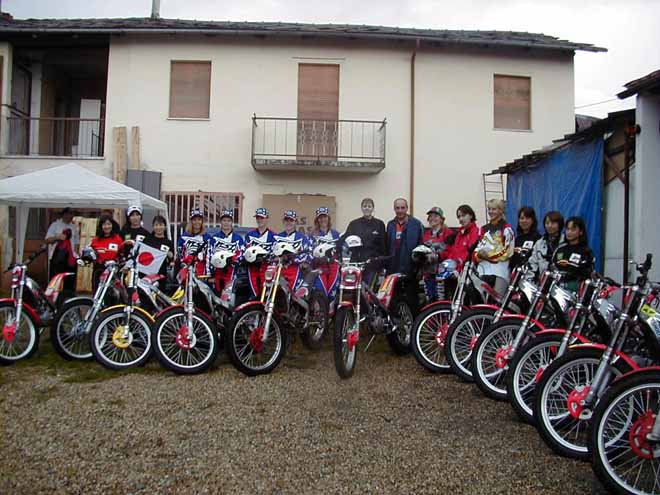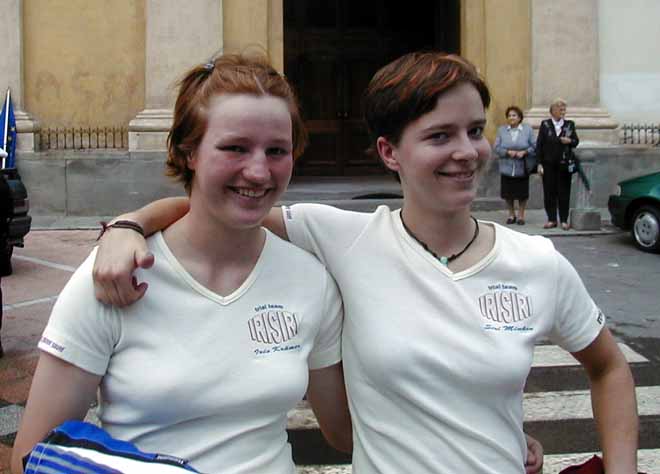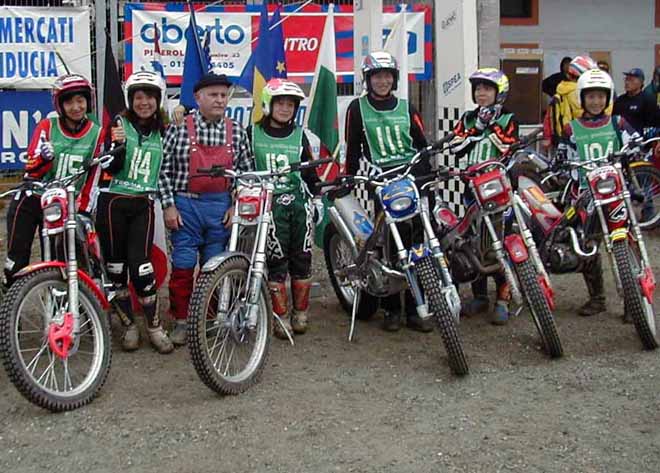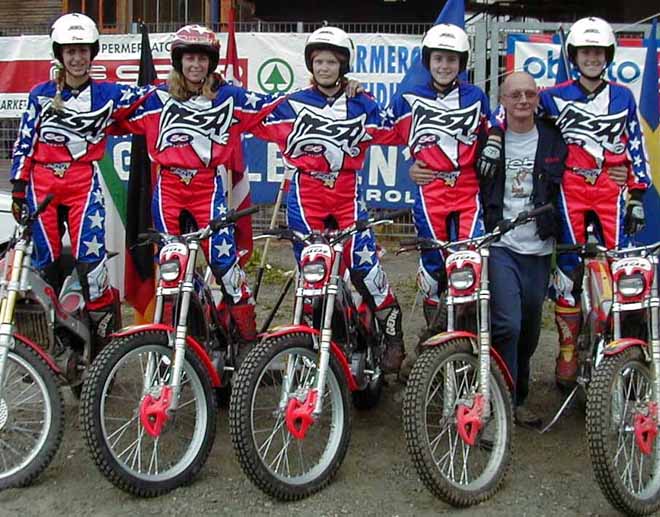09/09/13 - Trial future could start from the Women!
You all already know our opinion on the new non stop rule: now the championship is finished and it is time for an analysis. One more time we certified how the non stop was not appreciated in the large.
Not appreciated by the public. Sections became poor of the amazing obstacles, that the technological evolution reached by the machines and the high skill of the top riders let us admire.
Not appreciated by the observers. Too much varying the interpretation of the stop. There are those, who did not apply it strictly and those, who punished even the “dance” on the rear wheel. (happened in Italy) . Only on simplified hazards it is possible to pledge for an absolute fair judgment.
Not appreciated by the riders. All the young generation of riders grew up with the hopping and stopping in order to face the obstacles safety. Why giving up with these virtuosities, that are even nice to watch as spectators.
Not appreciated by the National Federations. Fortunately, a bit of wisdom has remained and in many nations, including Italy, in 2014 it will not be adopted, yet.
Now it 's time to admit that the choice was wrong. It is necessary to eat humble pie for a while, but it is better than continuing to waste time in this direction.
Meanwhile, in the agreement between Manufactures and FIM signed last year, non stop rule was just the first point.
The final aim was to increase practice and participation.
We propose to invest in women. Any sport to become popular must be practiced by both sexes. We can't say Trial is among them. Women are still few, too few, even if we must acknowledge that the former world champion, Iris Kramer, now in charge of the sector, is pushing a lot and last Friday in the last round of the 2014 world championship, 44 women attended.
But it is not enough. It seems like yesterday I was trying to convince doubters faces of this need. It was 1997. There was no internet or social networks, but I had good effect in spreading this idea, helped by fellow journalists of other nations.
Supported by Norwegian Maarten Mager and Anders Minken, lucky to live in a society where male and female roles were already much interchangeable, I put together a small group of about twenty girls. It was the 31st of August 31 of that year and in Torre Pellice, Piedmont, Italy, it took place the first international competition for the “weaker sex”. Among those participants there was a twelve year old girl, named Laia Sanz.
That event was repeated both in 1998 and in 1999, again in Torre Pellice and nearly 40 girls attended, representing 13 nations, including Australia, USA, Japan, Canada, as well, thanks also to the great work done by American Laura Bussing in her continent.
For that occasion, I also found the bikes to use for competitors coming from other continents, convincing Factories and Importers about the importance of the event.
Dragged along by enthusiasm , soon the women required to the FIM something of official and so it was born the first Women's Trial Nations in Seva, Spain in 2000.
Now after 16 years the women who try are not many more. In the countries of southern Europe, there 's always been a tendency to snub the female component. Indeed considering the hardness of our sport as a touch of pride, this was no more sustainable when even "slight" girls could engage in.
So that Trial could be spread between women, these ones have to be able to practice independently. It must be a choice of them. Not conditioned by parents, boyfriends or husbands. So it is necessary to invest in trial-schools, bikes for rent easy to use, publicity in the gyms. The competition will come later, much later. And in the world championship it is time for two categories. For thirteen years we had just one class.
Anyway we want to emphasize that the point "women" is not 'exhaustive.
The main problem in trials remains to find areas where to practice.
Or the relationships with the environmentalists. But identifying us with the International Federation and wanting to give them a piece of advice after we criticized the non stop rule, we think this could be a great place from which to start.
------------------------------------------------------------------------------------------
Il futuro del Trial potrebbe passare dalle Donne!
La nostra opinione sulle nuove regole non stop l’avete sempre conosciuta: ora che il campionato è finito ed è tempo di bilanci,
una volta di più abbiamo constatato quanto non sia stata gradita in generale.
Non gradita al pubblico. Le zone si sono impoverite di quegli ostacoli mozzafiato che l’evoluzione tecnologica dei mezzi e la preparazione dei piloti di vertice ci avevano consentito di ammirare.
Non gradita ai giudici. Troppo variegata l’interpretazione della fermata. Chi non l’ha applicata alla lettera, o chi invece ha punito anche la “danza” sulla ruota posteriore (visto in Italia). Solo su zone di livello decisamente più basso, si può garantire un’assoluta imparzialità di giudizio.
Non gradita ai piloti. Quasi tutti i giovani sono cresciuti con gli spostamenti e gli stop per affrontare in assoluta sicurezza gli ostacoli. Perché rinunciare a virtuosismi, che fra l’altro sono anche belli da vedere come spettatore?
Non gradita dalle Federazioni Nazionali. Per fortuna che un po’ di saggezza è rimasta e che in moltissime nazioni , tra le quali l’Italia anche nel 2014 non verrà adottato.
Ora e' il momento di ammettere che la scelta e' stata sbagliata. Ci vuole una buona dose di umilta' per farlo, ma e' meglio che continuare a perdere tempo in questa direzione. Intanto nella lettera di intenti che Case e FIM avevano sottoscritto l'anno passato, quello era solo un punto. Si parlava di azioni per ripopolare.
Noi proponiamo di investire nel settore femminile.
Qualsiasi sport per diventare popolare deve poter essere praticato da tutti e due i sessi. Il Trial non lo è. Sono ancora poche, troppo poche, le donne che si cimentano, anche se bisogna dare atto che l’ex campionessa mondiale, Iris Kramer, ora responsabile del settore, si sta dando un gran da fare e lo scorso venerdì nell’ultima prova del mondiale 2014, sono state ben 44 le donne alla partenza.
Ma non basta. Sembra ieri che cercavo di convincere visi dubbiosi di questa necessità. Era il 1997. Non c’era internet o i social network, ma riuscii ugualmente, tramite colleghi giornalisti di altre nazioni a fare girare la voce.
Appoggiato dai norvegesi Maarten Mager e Anders Minken, fortunati di vivere in una società dove i ruoli maschili e femminili erano già molto più interscambiabili, misi insieme uno sparuto gruppo di una ventina di ragazze, Ed il 31 agosto di quell’anno a Torre Pellice ebbe luogo la prima competizione internazionale per il sesso debole, tra le cui partecipanti c’era anche una dodicenne di nome Laia Sanz.
Quella gara è stata poi ripetuta sia nel 1998, sia nel 1999, sempre a Torre Pellice e furono circa 40 le ragazze intervenute, di ben 13 nazioni, tra cui Australia, USA, Giappone, Canada, tanto per intenderci, grazie anche al grande lavoro svolto dall'americana Laura Bussing.
Per l’occasione mi ero anche fatto carico di trovare le moto da usare per le concorrenti di altri continenti, convincendo Case ed importatori dell’importanza dell’avvenimento.
Trascinate dall’entusiasmo la ragazze richiedettero alla FIM un riconoscimento mondiale ufficiale e così nacque il primo Trial delle Nazioni femminile a Seva, in Spagna nel 2000.
Ora a distanza di 16 anni non sono molte di piu' le donne che ci provano. Nelle nazioni del sud Europa, Italia in primo piano, c'e' sempre stata la tendenza a snobbare la componente femminile, quasi a considerare la durezza del nostro sport come punta d'orgoglio. Non piu' sostenibile nel momento in cui anche “gracili” ragazze avrebbero potuto cimentarsi.
Affinchè si possa diffondere tre le donne, queste lo devono poter praticare in modo indipendente. Una loro scelta. Non condizionata da genitori, fidanzati o mariti. Quindi si deve investire in scuole, moto in affitto di facile uso. Pubblicità nelle palestre. Le gare vengono dopo, molto dopo. E nel campionato mondiale, e' tempo di due categorie. Da tredici anni c'è sempre e solo una classe.
Intendiamoci, il discorso “donne” non e' esaustivo.
Il problema principale rimane quello delle aree, dei sentieri , dei rapporti con gli ambientalisti. Ma immedesimandoci nella Federazione Internazionale e volendo dare un consiglio dopo avere criticato il cambio del regolamento, questo ci sembra un ottimo punto da cui ripartire.

